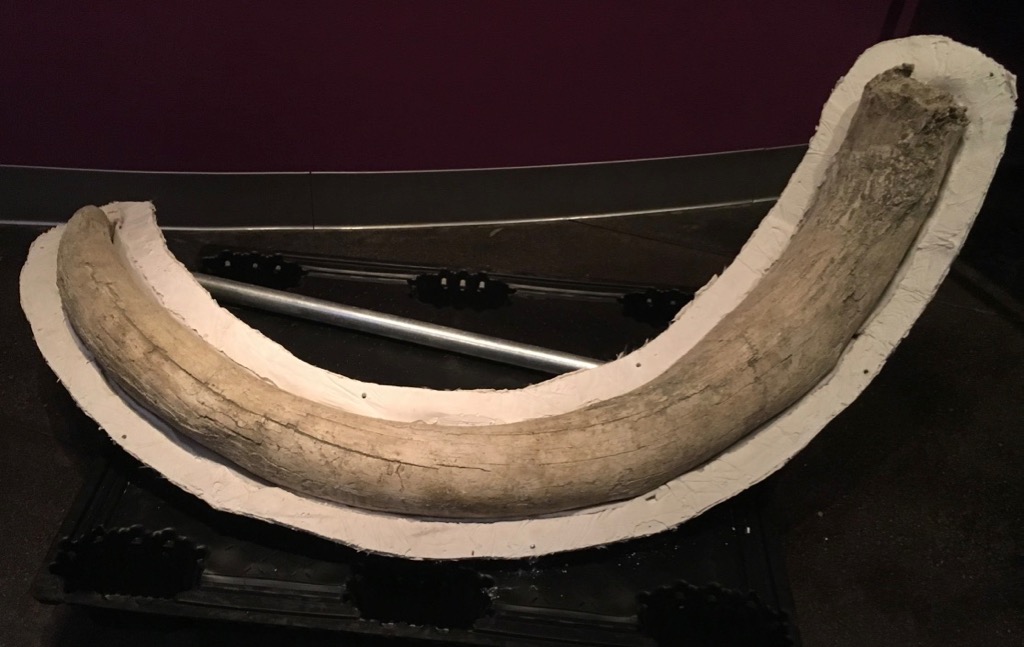 I missed last Fossil Friday while I was attending the Society of Vertebrate Paleontology in Calgary, which included posters on Diamond Valley Lake mastodon tusks and the Valley of the Mastodons Symposium and Exhibit. But I'm now back in Hemet, and ready for some more Fossil Friday posts!A few months ago I posted about a Columbian mammoth lower jaw from Merced County, collected by PaleoResources during a Caltrans road project. There was actually quite a bit of material recovered during this project, and we're currently in the process of integrating it into the WSC collections. One of the other large pieces is the tusk shown above.This is a typical left tusk from a mammoth, with strong curvature in multiple planes resulting in an open spiral shape. Mastodon tusks, in contrast, tend to be thicker for a given length (at least in males), and curve more strongly in one plane than the other, so the tusk is more of an arc than a spiral. While it's difficult to see from this angle, the tusk shown here has a fairly prominent wear facet at the tip.When PaleoResources dropped off this collection, they indicated that they suspected the mammoth material represented more than one individual, even though there were no duplicate pieces (so that, technically, the minimum number of individuals = 1). I agree with PaleoResources' assessment; I don't see any way such a large tusk could have come from a mammoth as young as the one represented by the lower jaw in the same deposit.This tusk, along with the juvenile lower jaw and an associated mammoth pelvis, are currently on display at the Western Science Center.
I missed last Fossil Friday while I was attending the Society of Vertebrate Paleontology in Calgary, which included posters on Diamond Valley Lake mastodon tusks and the Valley of the Mastodons Symposium and Exhibit. But I'm now back in Hemet, and ready for some more Fossil Friday posts!A few months ago I posted about a Columbian mammoth lower jaw from Merced County, collected by PaleoResources during a Caltrans road project. There was actually quite a bit of material recovered during this project, and we're currently in the process of integrating it into the WSC collections. One of the other large pieces is the tusk shown above.This is a typical left tusk from a mammoth, with strong curvature in multiple planes resulting in an open spiral shape. Mastodon tusks, in contrast, tend to be thicker for a given length (at least in males), and curve more strongly in one plane than the other, so the tusk is more of an arc than a spiral. While it's difficult to see from this angle, the tusk shown here has a fairly prominent wear facet at the tip.When PaleoResources dropped off this collection, they indicated that they suspected the mammoth material represented more than one individual, even though there were no duplicate pieces (so that, technically, the minimum number of individuals = 1). I agree with PaleoResources' assessment; I don't see any way such a large tusk could have come from a mammoth as young as the one represented by the lower jaw in the same deposit.This tusk, along with the juvenile lower jaw and an associated mammoth pelvis, are currently on display at the Western Science Center.
